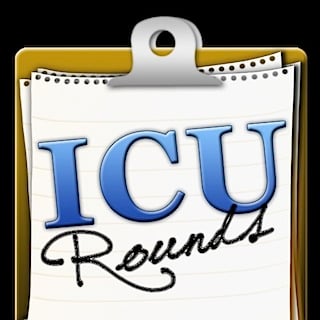Myocardial Infarction: PCI and medications
ICU Rounds
Jeffrey Guy
4.8 • 686 Ratings
🗓️ 20 October 2008
⏱️ 26 minutes
🧾️ Download transcript
Summary
Transcript
Click on a timestamp to play from that location
| 0:00.0 | You're listening to the podcast surgery ICRads. My name's Dr. Jeffrey Guy. I'm an associate |
| 0:05.0 | professor of surgery and director of the Burns Center of Vanderbilt University, School of Medicine. |
| 0:09.2 | I'm also the editor and author of Pharmacology for the Pre-Hospital Professional. It's available |
| 0:15.2 | on Elsevier. Today, the topic that I'd like to take on is the second of two podcasts. |
| 0:21.2 | The first one we did was on myocardial infarction of mycardiol ischemia, |
| 0:25.8 | and we introduced the basic concepts of myocardialchemia. |
| 0:29.7 | I talked about some of the roles of thrombolytics, |
| 0:32.7 | and some of the other agents used with thrombolyics, |
| 0:36.6 | and then the idea of this second part of the podcast was to discuss some of the role of |
| 0:43.3 | procutaneous coronary intervention or PCI. |
| 0:46.7 | Now, in the first podcast, we talked about trying to reestablish flow to the Schemic Heart using |
| 0:50.8 | various thrombolytic, and we presented some of the advantages and disadvantages of those various agents. |
| 0:56.2 | Now, primary coronary intervention, which we'll call PCI, PCI for the main of this podcast, |
| 1:02.1 | just to make it easier, and that's what my notes typically say, the major advantages of |
| 1:06.8 | primary PCI over thrombilic therapy, include a higher rate of return of normal blood flow. |
| 1:12.8 | And this is called Timmy Grade Blood Flow, or Timmy Grade 3. And we discussed that somewhat |
| 1:17.7 | in the first podcast. And if you don't understand what Timmy Grade blood flow is, don't worry. |
| 1:22.9 | It just really, it's a return of blood flow that is more non-pathological, more of what your typical blood flow is like. |
| 1:31.1 | The other advantages of primary PCI is a lower risk of intracranial hemorrhage because we're not using drugs that prevent the formation of blood clot |
| 1:38.1 | and an ability to stratify risk based on the severity and distribution of coronary artery disease. |
| 1:42.9 | Well, why is it that we can stratify a risk following primary PCI? |
| 1:46.1 | Well, it's pretty obvious is that we're able to get a better delineation of what the nature |
... |
Transcript will be available on the free plan in -6005 days. Upgrade to see the full transcript now.
Disclaimer: The podcast and artwork embedded on this page are from Jeffrey Guy, and are the property of its owner and not affiliated with or endorsed by Tapesearch.
Generated transcripts are the property of Jeffrey Guy and are distributed freely under the Fair Use doctrine. Transcripts generated by Tapesearch are not guaranteed to be accurate.
Copyright © Tapesearch 2025.

